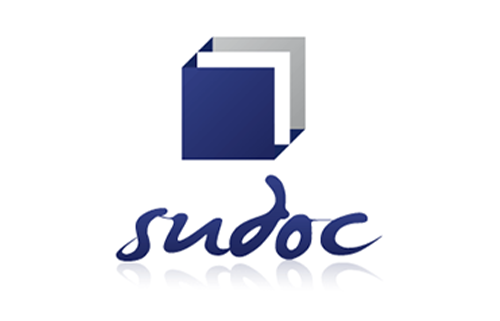Comparison of Angulation Deformity After Remodelling of Pediatric Femoral Fractures
Levent Adıyeke1, Suavi Aydogmus2, Emre Bilgin3, Tahir Mutlu Duymus4, Hasan Bombaci11Department of Orthopedic Surgery, Haydarpaşa Numune Training and Research Hospital, Istanbul, Turkey2Department of Orthopedic Surgery, Maltepe State Hospital, Istanbul, Turkey
3Department of Orthopedic Surgery, Izmir Tepecik Training and Research Hospital, Izmir, Turkey
4Department of Orthopedic Surgery, Special Saygı Hospital, Istanbul, Turkey
INTRODUCTION: Although there is a consensus on the treatment of femoral shaft fractures in children aged <4 years and adolescents, the treatment method is still controversial for children between aged 4 and 10 years. Therefore, different kinds of treatment methods are described. The aim of the present study was to investigate the healing capacity of femoral shaft fractures in 410-year-old patients who were treated non-surgically and to compare the clinical and radiological results with the surgically treated patients in the same age group.
METHODS: A total of 59 patients between aged 4 and 10 years were included in the study. The study included 18 (31%) females and 41 (69%) males. The mean age of the patients was 6.9 (410) years. The mean follow-up period was 84 (38107) months. The mean ages of the non-surgical group (n=32) and the surgical group (n=27) were 5.9 and 7.1 years, respectively. The causes of fractures were falls from height (n=29), motor vehicle accidents (n=20), child abuse (n=1), and other causes (n=9).
RESULTS: The improvement values at the angulation grades were significantly higher in anteroposterior and lateral radiographs in both groups (p<0.01). There was no significant difference between the groups in footthigh angle, foot progression angle, and leg length discrepancy (LLD). Fracture localization was not effective on LLD and clinical outcome success, and there was no significant difference between the two groups with regard to clinical outcomes.
DISCUSSION AND CONCLUSION: The immediate postoperative radiological reduction quality was significantly higher in the surgically treated group than in the non-surgically treated group in the early post-reduction. However, the differences of thighfoot angles and foot progression angles between the groups were not statistically significant. In addition, there was no difference with regard to LLDs between the groups.
Keywords: Cast, Femur diaphysis; plate; screw; trauma.
Pediatrik Femur Diafiz Kırıklarında Remodelasyon Sonrası Açısal Deformitenin Karşılaştırılması
Levent Adıyeke1, Suavi Aydogmus2, Emre Bilgin3, Tahir Mutlu Duymus4, Hasan Bombaci11Haydarpaşa Numune Eğtim Ve Araştırma Hastanesi, Ortopedi Ve Travmatoloji Kliniği2Maltepe Devlet Hastanesi, Ortopedi Ve Travmatoloji Kliniği
3İzmir Tepecik Eğitim Ve Araştırma Hastanesi, Ortopedi Ve Travmatoloji Kliniği
4Özel Saygı Hastanesi, Ortopedi Ve Travmatoloji Kliniği
GİRİŞ ve AMAÇ: Femur şaft kırıklarında 4 yaş altı ve adelosanlar için tedavi protokolünde ortak bir görüş bulunmasına rağmen 4-10 yaş arası hastalarda hala tartışmalar bulunmaktadır. Bu yaş grubunda farklı tedavi yöntemleri tariflenmiştir. Bu çalışmada amacımız 4-10 yaş arası femur şaft kırıklı hastalarda iyileşme kapasitesini araştırmayı ve konservatif ile cerrahi tedavi yapılan hastaların klinilk ve radyolojik sonuçlarını karşılaştırmayı hedefledik.
YÖNTEM ve GEREÇLER: Çalışma 4-10 yaş arasında 59 hastayı kapsamaktadır. Çalışmaya 18 (% 31) kadın ve 41 (% 69) erkek dahil edildi. Hastaların yaş ortalaması 6.9 (dağılım 4-10) idi. Ortalama takip süresi 84 (38-107) ay idi. Cerrahi olmayan grupta (n = 32) ve cerrahi grupta (n = 27) yaş ortalaması sırasıyla 5,9 ve 7,1 yıl idi. Travma mekanizması yüksekten düşme (n = 29), motorlu taşıt kazası (n = 20), çocuk istismarı (n = 1) ve diğer nedenler (n = 9) idi. Femur diafiz kırıkları lokalizasyona ve kırık mekanizmasına göre sınıflandırıldı. Cerrahi olmayan grup iskelet traksiyonu ve pelvipedal alçı ile tedavi edildi. Cerrahi grupta hastalar plak vida yöntemi ile tedavi edildi. Klinik değerlendirme ayak uyluk açısı ve ayak progresyon açısı ile yapıldı.
BULGULAR: Angulasyon derecelerindeki düzelme değerleri AP ve LAT radyografilerde her iki grupta anlamlı yüksek idi (p<0,01). Ayak uyluk açısı, ayak ilerleme açısı ve bacak uzunluk eşitsizliği verilerinde gruplar arasında anlamlı fark bulunmadı. Bacak uzunluk eşitsizliği ve klinik sonuç başarısı üzerinde kırık lokalizasyonun etkili olmadığı ayrıca klinik sonuçlar açısından her iki grup arasında anlamlı fark olmadığı bulundu.
TARTIŞMA ve SONUÇ: Cerrahi tedavi yapılan grupta operasyon sonrası radyolojik değerlendirmede redüksiyon kalitesi cerrahi olmayan gruba göre önemli oranda yüksek idi. Fakat ayak uyluk açısı ve ayak progresyon açısı her iki grup arasında önemli fark yok idi. Aynı zamanda her iki grup arasında bacak uzunluk farkı açısında anlamlı fark görülmedi.
Anahtar Kelimeler: Femur diafiz, Travma, Alçı, Plak, Vida
Manuscript Language: English
















